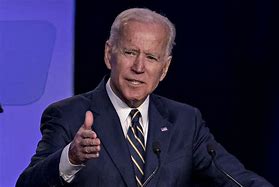World
‘India needs to be part of China-Pakistan Economic Corridor’

Islamabad: India should be included in the China-Pakistan Economic Corridor (CPEC) if its true promise is to be realised, said a leading Pakistani daily which, however, warned that the military establishment is reluctant to view India through any lens other than one of rivalry.
An editorial in the Dawn on Saturday said that recent visit by the president of the Asian Infrastructure Investment Bank (AIIB) Jin Liqun raised issues for the government.
“The new challenge was his emphasis on including India in the CPEC vision, thus opening up the doors of the corridor towards the growing economy to the east. Previously, too, Chinese President Xi Jinping had mentioned this in his speech before parliament when he visited Pakistan. The idea should not be dismissed.”
The daily said: “If the true promise of the corridor is to be realised, it will be necessary to include Pakistan’s neighbours – both east and west – in it. Of course, there are significant hurdles to this.”
It added that in Pakistan, “the military establishment is reluctant to viewing India through any lens other than one of rivalry, and in India a right-wing government is similarly averse to responding to any overtures for talks and advancement of peace”.
The daily said that for now “it is enough to note that the proposal to open access to the economic corridor for India has credible commitment at the highest levels in China, and if there is any party in the world that can encourage a change in thinking in this country at least, it is the government in Beijing”.
The editorial went on to say that it would be better for the government of Pakistan to draw up a more realistic list of projects that they would like to see funded through the AIIB, and use the early years of the bank to build a relationship rather than go for broke with a proposal for a mega dam.
“There is no shortage of infrastructure requirements in Pakistan, and realism shouldn’t be very hard to pitch,” it added.
World
Lockdowns in China Force Urban Communities to Defy Censorship and Vent Frustration Online

Shanghai’s rich middle class is leading a wave of online dissent over the strict and prolonged lockdowns imposed in various parts of the country. Chinese internet censorship is struggling as patience is wearing thin in many urban centers, coming up with creative forms of online protests.
Social Media Posts Revealing Lockdown Tension in Shanghai
Drawn-out lockdowns are nothing new in China as authorities insist with the nation’s zero-Covid policy since the start of the pandemic. Currently over This time around, however, metropolitan areas like Shanghai are increasingly difficult to keep quiet, given that its more than 25 million residents have seen weeks of total isolation along with food shortages and many other service interruptions.
Dozens of towns and reportedly over 300 million Chinese citizens have been affected by lockdowns of different severity. As expected, urban netizens have been most outspoken over their difficulties by finding creative ways to get around state censorship and bans placed on topics, news comments and spontaneous campaigns.
Shanghai residents have been using mobile proxies and hijacking seemingly unrelated hashtags to talk about healthcare issues, delivery failures and the overall severity of their situation. The “positive energy” that the Chinese government wants to transmit during the recent prolonged series of lockdowns does not come naturally to those counting food supplies and online censors are working hard to filter words, trending topics and undesired social media sharing.
WeChat groups and message threads are under constant monitoring. Posts questioning the zero-Covid approach have been quickly deleted, including by leading Chinese health experts like Dr. Zhong Nanshan. Video footage is soon censored and protests and investigations are quickly made to disappear.
Where this has not worked, officials have exposed banners with warnings and outright threats like “watch your own mouth or face punishment”, while drones have been patrolling the city skies. Yet, if anything, this has led to further tensions and unspoken confrontation with Shanghai’s educated and affluent middle class.
Creative Online Solutions Harnessing Civic Energy
Announcements by Chinese social media that they would be publishing the IP addresses of users who “spread rumors” have not helped either. Tech industry research has shown that much of Asia’s tech-savvy population has a habit of using mobile proxies and other privacy tools, quickly finding workarounds to browse the internet freely and talk to the world about the hottest topics.
The sheer volume of forbidden posts is already a challenge for the very censorship system, experts explain. Unable to track all trending hashtags, state workers overlook topics that speak about the US, Ukraine or other popular news. Linking human rights elsewhere to their situation, Chinese online dissidents establish their informal channels and “hijack” the conversation to share personal or publicly relevant information about the Covid suppression in their town.
Sarcastic and satirical posts still dominate. Others hope to evade the censors by replacing words from famous poems or the national anthem. One thing is certain – social media, when harnessed with the right creativity, has proven its ability to mount pressure on the government in even some of the most strictly controlled tech environments like China.























